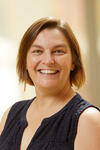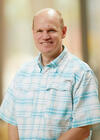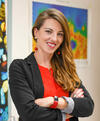In The News: College of Sciences

It’s all hands on deck in the fight against the coronavirus.
University of Nevada, Las Vegas physics professor Michael Pravica may have found the answer to the COVID-19 vaccine through targeted x-rays.
We’ve all been there. We queue up to board our plane at the gate, wait for a few people to be turned back because their row number hasn’t been called and queue again getting onto the plane itself, waiting for passengers to have their ticket checked and then wrestle with their bags getting them into the overhead lockers.
The coronavirus pandemic is going to change every aspect of our lives. It’ll be a long time before anyone feels comfortable crowding into a airliner for a long-haul flight, but sooner or later the package holiday companies will start up again.

As the coronavirus pandemic continues to take terrible tolls on human lives and cause economic hardship, scientists around the world scramble for a COVID-19 vaccine. They include Michael Pravica, a UNLV physics professor.
She is sparkling. Determined. Brilliant. Arya Udry is 32 years old. This native Valaisanne, whose mother lives in Hérémence and who grew up between Brittany and neighboring France, is now a professor of geology and planetology at the University of Nevada, in Las Vegas. A dazzling journey for the one who, while crawling on the mountains of Valais, dreamed of being an astronaut. "To realize this dream, you had to either become a scientist or an airplane pilot."
SARS-CoV-2, the virus that causes COVID-19, is believed to spread primarily when a person with the virus coughs or sneezes in close proximity to someone who is healthy — underscoring the current emphasis on social distancing.
Despite their microscopic size and simplistic cells, bacteria are some of the hardiest life forms around. In recent years, scientists have uncovered these stalwart microbes in environments as extreme as the searing hot springs in Yellowstone National Park and the acidic, metal-rich waters that drain out of mines.

Italy is flattening the curve while the U.S. has become the epicenter. What have we learned about the virus and how will we know when the tide turns on the rates of infection? Is social distancing working? Are enough tests available to identify and isolate the infected? What have we learned about the virus surviving on surfaces and in the air? What mathematical models can help to predict the peak and hopefully the decline in new cases as time goes on? Is the end in sight? Media were invited to attend and ask questions at this Virtual Press Conference with a Newswise Live Expert Panel to discuss the COVID-19 crisis.

IN 2013, SCIENTISTS were stunned to find microbes thriving deep inside volcanic rocks beneath the seafloor off the Pacific Northwest, buried under more than 870 feet of sediment. The rocks were on the flank of the volcanic rift where they were born, and they were still young and hot enough to drive intense chemical reactions with the seawater, from which the microbes derived their energy.

The coronavirus has changed the way society functions, and in turn, many people are spending a lot of time at home. By doing so, they're both staying away from people who might have unwanted germs and are keeping themselves from spreading unwanted germs.




